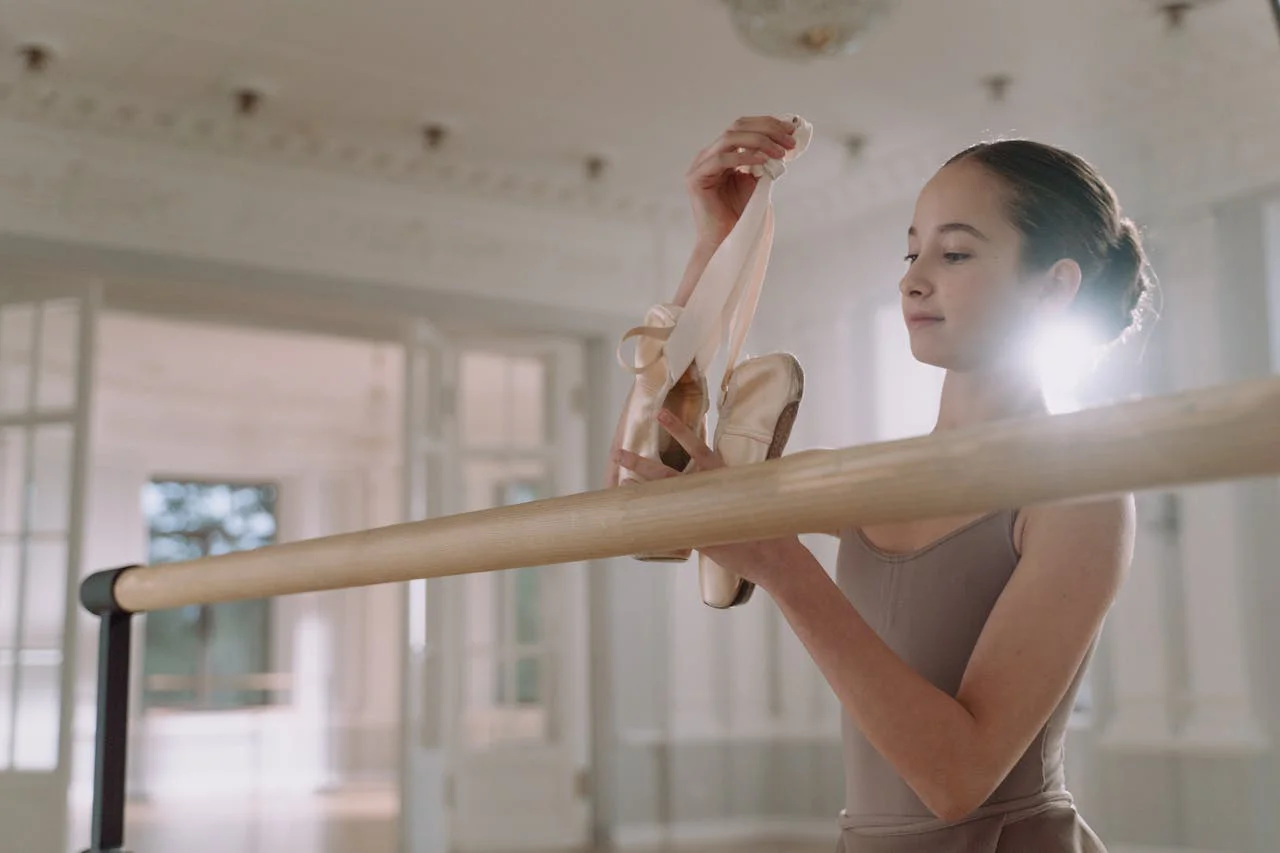With our leveled ballet trainings that provide them with all the knowledge and experience required to become a professional ballerina or ballet dancer, from body discovery and correct posture to flexibility, balance to coordination, advanced ballet techniques to choreography knowledge, stage performance to musical perception, we not only shape their career goals; we also support them to become social, self-confident, happy and free individuals.
We have specially prepared our 6-12 Leveled Ballet Basic Training program to guide families who want to direct their children's talents, to raise successful ballet artists of the future and to provide cultured individuals with a love and awareness of art.
Basic ballet training for children between the ages of 6-12 aims to establish the foundations of physical development, flexibility, coordination and love of art. During this period, children develop their technical skills, acquire disciplined work habits and discover their creativity as they enter the world of ballet. Here are the main components of basic ballet training for this age group:
1. Basic Ballet Positions (Positions of the Feet and Arms):
Ballet training in this age group begins with the five basic foot positions of classical ballet. These positions form the basis of the dance and each movement is built on these positions. In addition, basic arm positions are taught.
- Five Foot Positions: First, second, third, fourth and fifth foot positions are introduced to children.
- Arm Positions: Correct arm positions and movements are taught. Basic arm positions develop students' musicality and aesthetic perceptions.
2. Barre Work:
Barre work is a basic ballet training method used to develop balance and body control. The barre allows students to learn the movements more easily and helps them maintain body alignment.
- Plié: This basic movement, performed by bending the knees, helps stretch the legs and is one of the most important basic movements in ballet.
- Tendu: This movement, performed by extending the feet, strengthens the foot muscles and increases body control.
- Relevé: This movement, performed by rising on the tips of the toes, improves balance and strengthens the ankle muscles.
- Rond de Jambe: Circular movement of the leg increases the flexibility of the hip and leg muscles.
3. Center Work:
After the bar work is completed, students move to the center and move without the bar, maintaining balance and control. The lack of support from the bar at this stage encourages children to balance more and move independently.
- Port de Bras: The arms are taught to move gracefully and fluidly.
- Pirouettes: Children in this age group are introduced to basic turning movements (pirouettes). First, start with half turns and gradually move on to full turns.
- Adagio: Flexibility and balance are developed with slow and controlled movements.
- Allegro: These are fast and jumping movements. Children start learning ballet leaps by making small leaps.
4. Flexibility Exercises:
Flexibility is of great importance for the 6-12 age group. Regular stretching exercises are performed for children to maintain and develop the flexibility of their bodies. These exercises provide a strong foundation for them to be able to perform more difficult ballet moves in the future.
- Leg Stretching: Various stretching exercises are performed to stretch the hamstring and quadriceps muscles.
- Back and Spine Stretching: Back stretching exercises are performed to maintain proper posture.
5. Rhythm and Musicality:
Ballet training requires exploring the relationship between dance and music. Children learn to perform ballet steps according to a certain rhythm and musical structure. This strengthens the connection between musicality and dance and develops children's rhythmic perception.
- Adapting to the Rhythm: They learn how to take steps along with the music. Children move according to the tempo of the music, which develops their sense of rhythm.
- Improvisation and Creativity: In some classes, children are given the opportunity to improvise dances to the music, encouraging their creativity.
6. Posture and Posture:
Ballet requires proper posture, and correct posture techniques are emphasized in this age group. Children are trained to keep their head, shoulders, back and legs in the correct position.
- Head and Neck Position: They are taught to carry their head and neck gracefully.
- Upright Posture: They focus on keeping their spine aligned correctly and their shoulders back.
7. Balance and Coordination:
Ballet is an art form that requires a high level of balance and coordination. Children between the ages of 6-12 do various exercises to develop their balance skills. These exercises are applied both during and outside the barre exercises.
- Balance on One Leg: Relevé and pirouette exercises are used to develop balance on one leg.
- Coordination Exercises: Combinations of movements are performed to develop the ability to control more than one movement at the same time.
8. Discipline and Responsibility:
Ballet training helps children gain disciplined working habits. Habits such as regular practice, attending classes on time, and obeying class rules are acquired.
- Class Discipline: During ballet training, children learn to obey class rules and listen carefully to the instructor.
- Sense of Responsibility: They are encouraged to practice regularly for their own development.
9. Creativity and Expression:
Ballet is a form of artistic expression. Children learn to express their feelings and tell a story through dance. At this stage, teachers encourage children to develop their individual expressions.
- Emotional Expression: Children learn to develop expressions appropriate to the music and story by working with emotional pieces.
- Character Animation: In some classes, students develop their staging and acting skills by animating ballet characters.
10. Performance Experience:
Small shows and performances are organized to provide children with stage experience during ballet training. This increases their confidence and helps them feel comfortable on stage.
- End-of-Year Performances: School end-of-year performances allow children to take what they have learned to the stage and share it with their families.
- Small Class Performances: Students can present their learning to each other through small performances they do in class.


